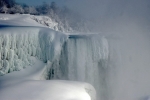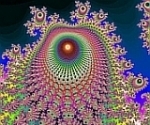I was under the impression---maybe false?---that a typical apnea or hypopnea is likely to END with some recovery breaths---breaths that are larger (and quicker?) than the running baseline, but that the breathing before the apnea would either look normal or look like flow limitation breathing---i.e. breaths becoming more ragged and more shallow. And I do see those kinds of OAs, CAs, and Hs in my data.
But I also see a lot of the following kinds of OAs and CAs (and sometimes Hs) that follow several larger than normal breaths such as these, which are taken from five different nights' data during the period between July 15 and Aug. 1 :





In all of these cases, I don't remember waking up right before or after the apnea: When I wake up, I routinely turn Kaa off and then on so the conscious wakes are visible in the wave forms. An example of a wake that I remembered is shown in the break in the wave form at the end of the first example. Notice the similarity between the breathing right before I turn Kaa off and the breathing right before the apnea.
So what are those big breaths preceding the apneas? Any speculation?
And for what it's worth, I do sometimes have these random "big breaths" without having an apnea occur or the following breaths being labeled as a hyponea.












